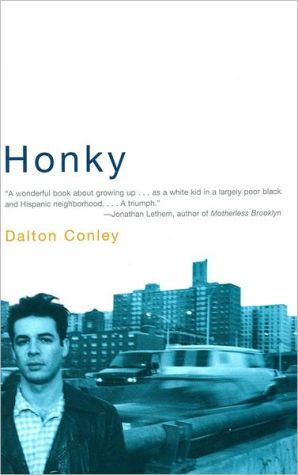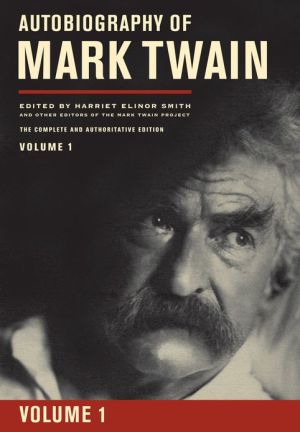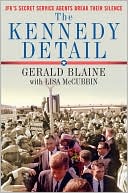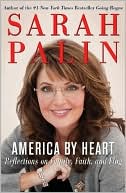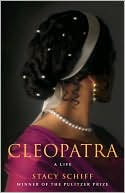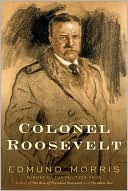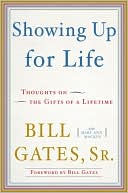Honky
This intensely personal and engaging memoir is the coming-of-age story of a white boy growing up in a neighborhood of predominantly African American and Latino housing projects on New York's Lower East Side. Vividly evoking the details of city life from a child's point of view--the streets, buses, and playgrounds--Honky poignantly illuminates the usual vulnerabilities of childhood complicated by unusual circumstances. As he narrates these sharply etched and often funny memories, Conley shows...
Search in google:
This intensely personal and engaging memoir is the coming-of-age story of a white boy growing up in a neighborhood of predominantly African American and Latino housing projects on New York's Lower East Side. Vividly evoking the details of city life from a child's point of view--the streets, buses, and playgrounds--Honky poignantly illuminates the usual vulnerabilities of childhood complicated by unusual circumstances. As he narrates these sharply etched and often funny memories, Conley shows how race and class shaped his life and the lives of his schoolmates and neighbors. A brilliant case study for illuminating the larger issues of inequality in American society, Honky brings us to a deeper understanding of the privilege of whiteness, the social construction of race, the power of education, and the challenges of inner-city life. New York Magazine Honky vividly and subtly evokes the evokes the jarring distinctions of daily life in Manhattan circa 1980.
\ \ \ \ \ Chapter One\ \ \ Black Babies\ \ \ As my mother tells it, the week before I kidnapped the black baby I broke free from her in the supermarket, ran to the back of the last aisle, and grabbed the manager's microphone. "I want a baby sister," I announced, my almost-three-year-old voice reverberating off ceiling-high stacks of canned Goya beans.\ "I want a baby sister," I repeated, evidently intrigued by the fact that my own voice seemed to be coming from everywhere. Soon my mother's shopping cart was rattling across the floor of the refrigerated back row where all the meats were kept. I can envision the two long braids on either side of her head flapping maniacally, as if they were wings trying to lift her and the cart off the ground. She was, in fact, pregnant. She had explained to me what this meant a week earlier, and I had become fixated on it, asking each day how much longer it would be. My parents tolerated this first of my many obsessions, happy that at least I was not resentful and jealous, though they wondered why I so much wanted the baby to be a girl and not another something like myself.\ "How old will I be when the baby's born?" I asked one day. The next morning I continued my questioning: "When I'm five, how old will the baby be?" Soon after that I started to worry about its sex: "When will we know it's a sister and not a brother?" Skin color never entered my line of questioning.\ My parents did their best to engage my curiosity, each in their own way. While my father, Steve, used colored pens to handicap the Racing Form, hegave me some markers and told me to draw a picture of the baby. I rushed through this endeavor using only the black marker and produced something that looked like his sweat-smeared copy of the Form after a long day at the racetrack. Steve, a painter, had just gotten into a black-and-white phase himself and was touched by my colorless effort; he pinned it up on the wall above the dining room table, where it hung for years.\ In contrast to my father, with his visual orientation, my mother, a writer, took a verbal approach. She instructed me to think of an adjective for each letter of the alphabet to describe how I would like my younger sibling to be. We only got through "a-door-bell," my word for adorable, and then to brown before I got exasperated and insisted that she tell me what the baby would be like—as if she knew and was holding out on me.\ Finally, I could stand the wait no longer. About a week after the supermarket incident, I swiped a baby myself. While playing in our housing project's courtyard, I found an unattended stroller. In it was a toddler just a few months younger than me, with cornrows braided so tightly on her little head that they pulled the skin on her face tautly upward. I remember that she was smiling up at me, and I must have taken this as permission. I reached up to grab the handles of the carriage, pushed it across the shards of broken green and brown malt liquor bottles that littered the concrete, and proudly delivered it to my mother, who was sitting on a bench with a neighbor.\ "I found my baby sister," I declared, jamming the stroller into her shin for emphasis.\ "No you haven't," my mother replied, putting her hand over her open mouth. She turned to her neighbor on the splintered green bench. "Do you know where her mother is?"\ The child's parents—leaders of the neighborhood black separatist organization—lived in our building, on our very floor. By now the baby was crying, and I was jumping up and down with excitement, laughing with delight at my success. But my laughter soon dissolved into tears, for my mother immediately seized the plastic handles of the stroller and returned it from where it came. She made a beeline across the concrete, over the black rubber tiles of the kiddie area and under the jungle gym, all the way to the other side of the playground, where a woman was pacing frantically back and forth, her Muslim head scarf flowing out behind her like a proud national flag. When my mother finally reached the woman she apologized repeatedly, explaining that she could certainly empathize with the experience, since I escaped from her sight several times a week. The woman said nothing, her silent glare through narrowed eyes a powerful statement in itself, while the baby and I went on screaming and crying a cacophonous chorus.\ After the kidnapping, the separatist mother did not speak to us for a month, as if we had confirmed her worst suspicions about white people. Then, just as the springtime buds were starting to blossom, she talked to my mother in the elevator. "April is the cruelest month," she said, as if T. S. Eliot were code for something. Whenever my mother would tell this part of the story, her voice would soften and trail off. Only later did I figure out that she remembered it so vividly out of a sense of liberal, racial guilt—guilt over her surprise at hearing a black separatist recite English poetry.\ "Yes, it is," my mother responded, wracking her brain as she tried to remember which poet had said that. She thought maybe it was Ezra Pound, the Nazi sympathizer, and that the woman was making a veiled expression of anti-Semitism. Then she quoted the poem back to the woman: "Winter kept us warm, covering Earth in forgetful snow ..."\ The woman didn't say anything else, continuing to stare at the numbers as they descended from twenty-one; she got off the elevator at the ground floor and smiled at my mother. At this point in the telling, my mother's voice would rise with the satisfaction that she and the woman had shared a moment, a literary bond. But later that night, well after midnight, the woman, her husband, and my ersatz baby sister were dragging, wheeling, and pushing all of their belongings across the hallway to the elevator in a caravan of suitcases, each one overstuffed and bulging, as pregnant with mystery as my mother was with my imminent sibling. The woman was screaming at her husband to hurry up, so loudly that she woke up several families. Parents poked their heads out of steel doorways, blinking as they peered into the fluorescent hallway. Finally my mother asked the woman to keep it down, since we were trying to sleep. I imagine that she asked sheepishly, cowed by her chronic white guilt.\ "Noise?" the woman yelled back as she pushed a shopping cart full of overstuffed manila folders down the corridor. Her eyes were as wide with adrenaline as they had been narrowed with seething rage the month before. "The noise is your kid's Big Wheel going up and down, up and down the hallway all day. Don't tell me about noise." Despite her reaction, the din soon ebbed, and all that was left of the separatists was a quite literal paper trail that led back to their apartment, whose glossy, brown-painted door stood ajar. I don't need my mother's storytelling to recall the open door. An open door in that neighborhood was something strange and unusual. It usually meant something was seriously amiss—that a woman was fleeing an abusive husband, that a robbery or even a murder had taken place. For me, the open door came to have the same association with death that a hat on a bed does for many people.\ Insomniac that she was, my mother stayed up and waited eagerly for the sound of the newspaper dropping outside our door. She savored her morning ritual, in which she brewed dark-roast Bustello-brand Puerto Rican coffee to accompany the Daily News. That morning my mother read in the paper that the separatist group had taken credit for a bomb planted at the Statue of Liberty the day before. The bomb had been defused, but it still caused a panic among the tourists. Just as she was reading that the FBI was searching for the members of the separatist group, the racket in the hallway started up again. She peeked out, and there, as if arriving on cue, were the investigators from the FBI, identified by the large yellow letters on the backs of their nylon jackets. Within an hour they, too, had cleared out, padlocking the family's door and pasting layer upon layer of tape over it, yellow strips with black writing that formed negatives of the jackets they had worn. The tape read CRIME SCENE, DO NOT ENTER—as if we had a choice. I was fascinated with this tape and peeled it off strip by strip when I played in the hallway. My mother saved some for my room, guessing correctly that I would like it after a few years, when I understood what it meant. A couple of months later the padlock and tape came down, and a few weeks after that a Chinese family moved in. We never saw the FBI again, and the FBI never saw the separatists.\ In retrospect, my baby-seizing mistake was understandable. The idea that a brown-skinned baby couldn't come from two ashen parents wouldn't have entered the mind of a two-and-a-half-year-old. After all, a young child has not yet learned the determinants of skin color, much less the fact that in America families are for the most part organized by skin color. Moreover, in the projects people seemed to come in all colors, shapes, and sizes, and I was not yet aware which were the important ones that divided up the world. At that age, the fact that my parents were much bigger than me was of much greater consequence that the fact that most of the other kids my size had darker skin.\ I even felt culturally more similar to my darker-hued peers than to the previous generations of my own family. For one, I didn't talk like my parents, who had migrated to New York from Pennsylvania and Connecticut. I spoke like the other kids in the neighborhood. On the playground everyone pretty much spoke the same language with the same unique accent, no matter where our parents came from. While adults might speak only Spanish, or talk with a heavy drawl if they came from down South, our way of talking was like a layered cake; it had many distinctly rich flavors, but in our mouths they all got mixed up together. When we "snapped" on each other, little did we know we were using the same ironic lilt and intonation once employed in the Jewish shtetls of Central Europe. This Yiddish-like English had mixed with influences from southern Italians, Irish, and other immigrant groups to form the basic New Yorkese of the mid-twentieth century. We spoke with open vowels and dropped our rs: quarter was quartah, and water was watah. To this European stew we added the Southern tendency to cut off the endings of some words—runnin', skippin', jumpin'—a habit that came northward with many blacks during the Great Migration. We also turned our ts into ds, as in "Lemme get fiddy cents." The latest and most powerful influence was Puerto Rican. Within the Spanish-speaking world, Puerto Ricans were notorious for their lazy rs, just as New Yorkers were, so the fit was perfect. Whenever someone said mira, the Spanish term for look, it came out media.\ Although Spanish separated the native speakers from those of us who picked it up on the playground, the presence of the large Puerto Rican population had the opposite effect for me, narrowing the racial rift between others and myself. Their various hues of tan and brown made my looks seem a matter of degree rather than of kind, filling in the spectrum of color separating most of the black kids from me. It helped that I was not entirely pale. My hair was as dark as that of anyone around. If studied closely, my eyes betrayed brown shades around the interior of the iris, fanning out to green, but from afar they looked no lighter than those of a lot of the kids. My skin tone ranged from white to brownish depending on the time of year. For all these reasons, I perceived skin color in particular and race in general as something mutable, something that could change with the seasons or with an extended trip back to Puerto Rico. In this I was no different from scholars two centuries earlier who described "blackness" as a universal freckle that would fade with time spent in the North or darken over the course of generations in Africa.\ While I may have been oblivious to race as a toddler, I certainly recognized gender differences. More than anything else, I prayed for the baby to be a girl. As it turned out, I got my wish.
Prologuexiii1Black Babies32Trajectories113Downward Mobility214Race Lessons375Fear536Learning Class657The Hawk758Getting Paid919Sesame Street10310Welcome to America11111No Soap Radio12112Moving On Up12913Disco Sucks13714Addictions14915Symmetry16116Fire17317Cultural Capital183Epilogue197Author's Note205
\ From Barnes & NobleWhen he was only three, Dalton Conley did his part for racial integration: He kidnapped the infant daughter of a black separatist down the street. Growing up in Manhattan's Lower East Side and Greenwich Village, Conley realized more than once that the thick ethnic stew of his neighborhood had left him a conspicuous outsider. His unsentimental memoir tells us much about race and class in America, and also much about growing up.\ \ \ \ \ New York MagazineHonky vividly and subtly evokes the evokes the jarring distinctions of daily life in Manhattan circa 1980.\ \ \ Jerusalem PostA quick and easy read, even for those unfamiliar with the setting, the writing is beautiful and the subject matter forever haunting.\ \ \ \ \ San Francisco ChronicleBy the end of this small but absorbing volume, readers will have experienced a rare opportunity for insight into the complexities of race in America. Honky provides a riveting passage through one man's coming of age in an America fractured by color and class but still longing for wholeness.\ \ \ \ \ Guardian UKConley has become a superstar by making connections between the field and the personal, or as the mission for his Centre for Advanced Social Science reads linking academy to policy to community. And now, in HONKY, he has mined his own life as a social science experiment.\ \ \ \ \ Publishers Weekly"I've studied whiteness the way I would a foreign language," declares Conley at the outset of his affecting, challenging memoir, laced with the retrospective wisdom of the sociologist (at New York University) he has become. As the child of bohemian, white parents, he grew up in an otherwise black and Hispanic housing project on New York's Lower East Side. At elementary school in the 1970s, he found himself placed in the "Chinese class," after his stint in the black class--where he was the only student not to receive corporal punishment--left him uncomfortable. Despite the family's lack of funds, they had cultural capital in the form of social connections, and were able to transfer young Dalton to a better school, where he began to feel some snobbery toward kids in his own neighborhood. Yet the friend who accepted Dalton most was a black youth from the neighborhood, Jerome, who was tragically disabled in a random act of violence that helped spur Conley's parents to leave the Lower East Side for subsidized housing for artists. Part of the memoir concerns the universality of poverty--but a thoughtful examination of the privileges of race and class also emerges. Despite the book's title, the author cites only one major episode in which he was threatened and called "honky." Conley acknowledges that he doesn't know how to account for such successes as gaining admission into the selective Bronx High School of Science: race? parental protectiveness? his own aspirations? It is "the privilege of the middle and upper classes," he observes, to construct narratives of their own success "rather than having the media and society do it for us." (Oct.) Copyright 2000 Cahners Business Information.\|\ \ \ \ \ Library JournalConley (sociology, New York Univ.; Being Black, Living in the Red: Race, Wealth, and Social Policy in America) has written a compelling memoir of growing up as a white child in the 1960s in a Manhattan housing project inhabited by African Americans and Latinos. His mother, a writer, and father, an artist, could not afford a middle-class home and refused to borrow from their relatively affluent families. Consequently, Conley's childhood "was like a social science experiment," focusing on the intersections of race and class in late 20th-century America, while his youth provided indelible lessons in the "invisible contours of inequality." The story of the author's best friend, an African American, who was paralyzed in a random shooting, is especially moving. Beautifully written and filled with telling anecdotes, this book is highly recommended.--Anthony O. Edmonds, Ball State Univ., Muncie, IN Copyright 2000 Cahners Business Information.\ \ \ \ \ Kirkus ReviewsConley (Sociology/New York Univ.) recounts his years of growing up poor in the 1960s, '70s, and '80s in the projects on the Lower East Side of New York, where as a white he was a minority amid Latinos, blacks, and Asians. His mother and father were a bohemian couple who abandoned their respectable origins and moved to the inner city. Young Conley went to school first on the Lower East Side first and later in Greenwich Village. The comparison between the poorer schools of the Lower East Side with those of better-off Greenwich Village allows the sociologist in Conley, mercifully gagged until that point, to come gushing through, in the process spilling the jargon of his profession over what had heretofore been a fine first-person narrative. Sociology gets him into trouble in other ways as well. Conley, for example, is inclined to appropriate slang words like "yo" from their present usage back into the late 1960s-when, arguably, it was being used only in some small sectors of the black community. Moreover, the word "honky" is a slightly disingenuous pejorative term, used (by Latinos mostly) more for its shock value than for anything else. More serious still is Conley's portrayal of blacks (and some Latinos, too) as hopeless victims-in contrast to the whites, who emerge triumphantly unscathed to tell the black and Latino stories with all their sympathies in all the right places.\ \
